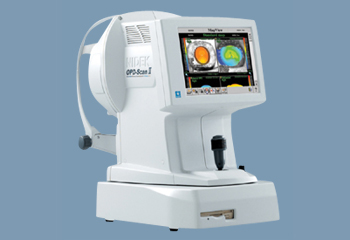
The Marco 3-D Wave ARK 10000 combines three advanced technologies plus wavefront analysis, in one easy-to-use refractive diagnostic workstation. With the Marco 3-D Wave a practice can obtain refraction, corneal topography, optical path difference (OPD) and wavefront analysis. The Marco 3-D Wave allows the user to evaluate a patient comprehensively, perform refractive and cataract surgery screenings, evaluate postoperative complaints, and determine pathology diagnoses. In short, the Marco 3-D Wave gives outstanding vision diagnostic capabilities that in the past were simply unavailable.
With the remarkable Marco 3-D Wave, Marco gives you an instrument that can evaluate the patient’s total optical system. Measuring both low and high-order aberrations on a single axis, the Marco 3-D Wave gives you the power to diagnose patient complaints that simply would not be diagnosed before.
Features:
Marco 3-D Wavefront Analysis For True Vision Diagnostics:
• Optical Path Difference (OPD)
• Wavefront High-Order
• Wavefront Total
• Eye Image Displaying Mesopic and Photopic Pupils
• Internal OPD
• Refractive Maps
• Point Spread Function
Applications:
• Evaluating all eyes not correctable to 20/20
• Differentiating corneal from lenticular aberrations
• Comparing objective to subjective point spread function (PSF)
• Assessing cataract patients’ symptoms and “quality” of vision
• Pre- and post-posterior capsular opacification (PCO) effects
• Evaluating post-op IOL tilt, decentration, multifocal optics
• Assessing contact-lens candidates for soft- versus hard-lens wear
• Contact-lens care, including orthokeratology (e.g., CRT)
• Evaluating corneal aberrations secondary to certain lid and ocular surface pathologies
• Monitoring progress and visual effects from varying ocular pathologies and surgeries
• Assessing pre- and post-corneal refractive surgery patients
• Evaluating post-op refractive-surgery complaints
• Counseling patients on their specific benefits (and limitations) with conventional versus wavefront-guided custom ablation












